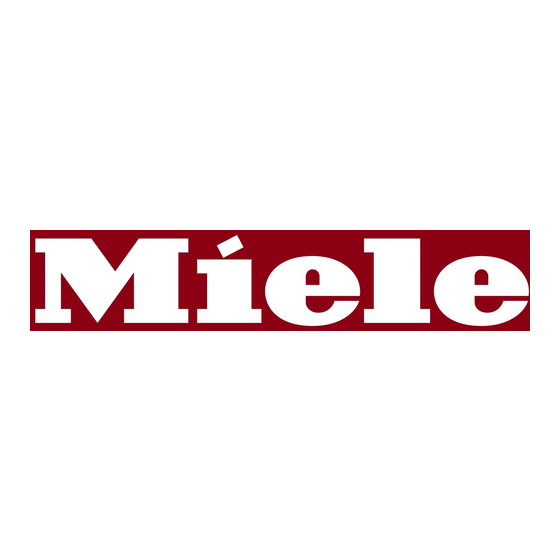Miele Dishwasher Verzorging en onderhoud - Pagina 29
Blader online of download pdf Verzorging en onderhoud voor {categorie_naam} Miele Dishwasher. Miele Dishwasher 44 pagina's.

6. Reactivation (4.5 Water softening and reactivation).
4.4 Drying
Depending on model, Miele dishwashers utilize four different drying
systems.
1. Evaporation drying:
Drying occurs mostly using the residual heat retained in the
dishes after rinsing. On models with tubular heating elements,
the heating is also activated at intervals.
2. Recirculation evaporation drying (fully integrated models):
Recirculation evaporation drying operates with the heat
exchanger principle.
Moist, hot air is extracted from the cabinet by a fan through an
opening in the lid area. This air is then passed over the surface
of a pocket filled with cold fresh water, where the moisture
condenses out, and then returned to the cabinet. This circuit is
repeated until the load is dry.
3. Turbothermic drying (free-standing, built-under and integrated
models):
Drying is carried out by venting the cabinet in several stages.
So long as water is in the dishwasher, the Turbothermic fan
remains closed. When the drying phase first begins, the fan is
half opened. This causes moist, hot air from the cabinet to be
mixed with cold, dry air from the door cavity and then expelled
from the machine. This mixing prevents the development of
condensate. Finally the fan is fully opened and as moisture has
already been extracted from the cabinet visible steam and
condensate development is avoided. At the same time the
possibility that the load and cabinet become moist again is
avoided. After the wash program has finished, the fan flap
remains open until the door is opened to the horizontal setting.
Note
Independent test institutes have repeatedly confirmed that
Turbothermic drying is more hygienic than drying manually
with a cloth.
Technical Information
29
